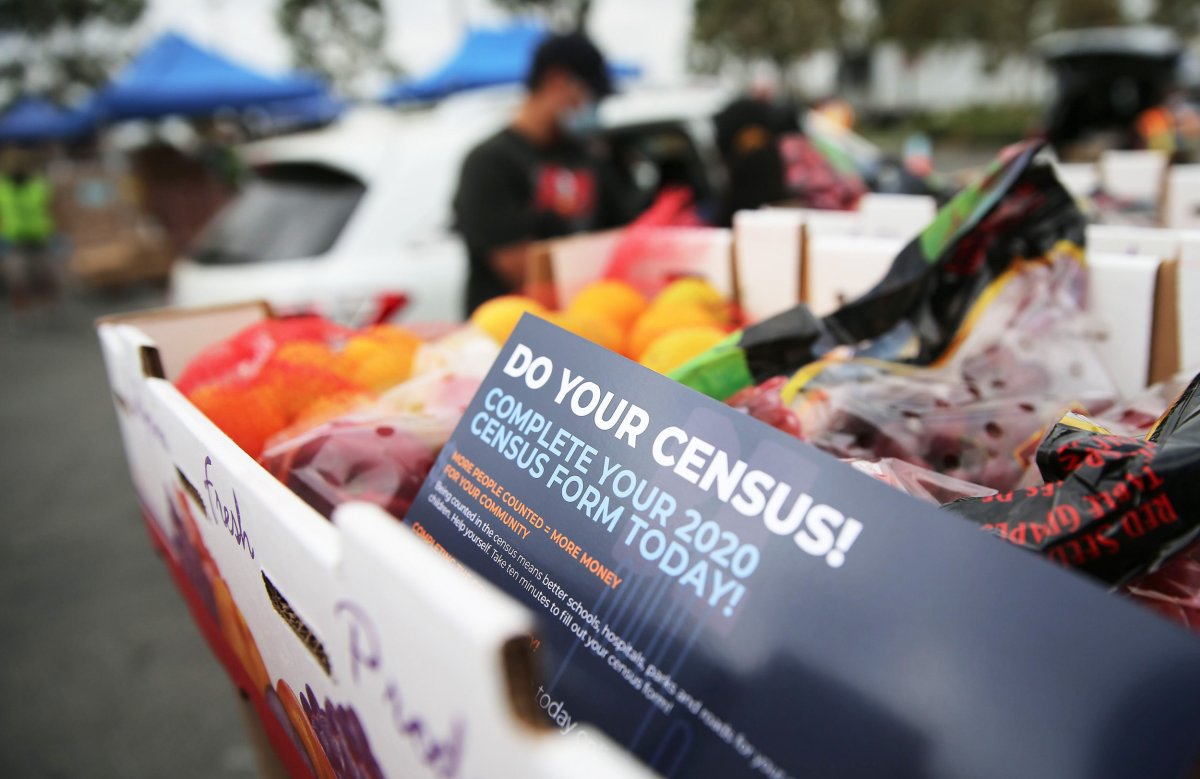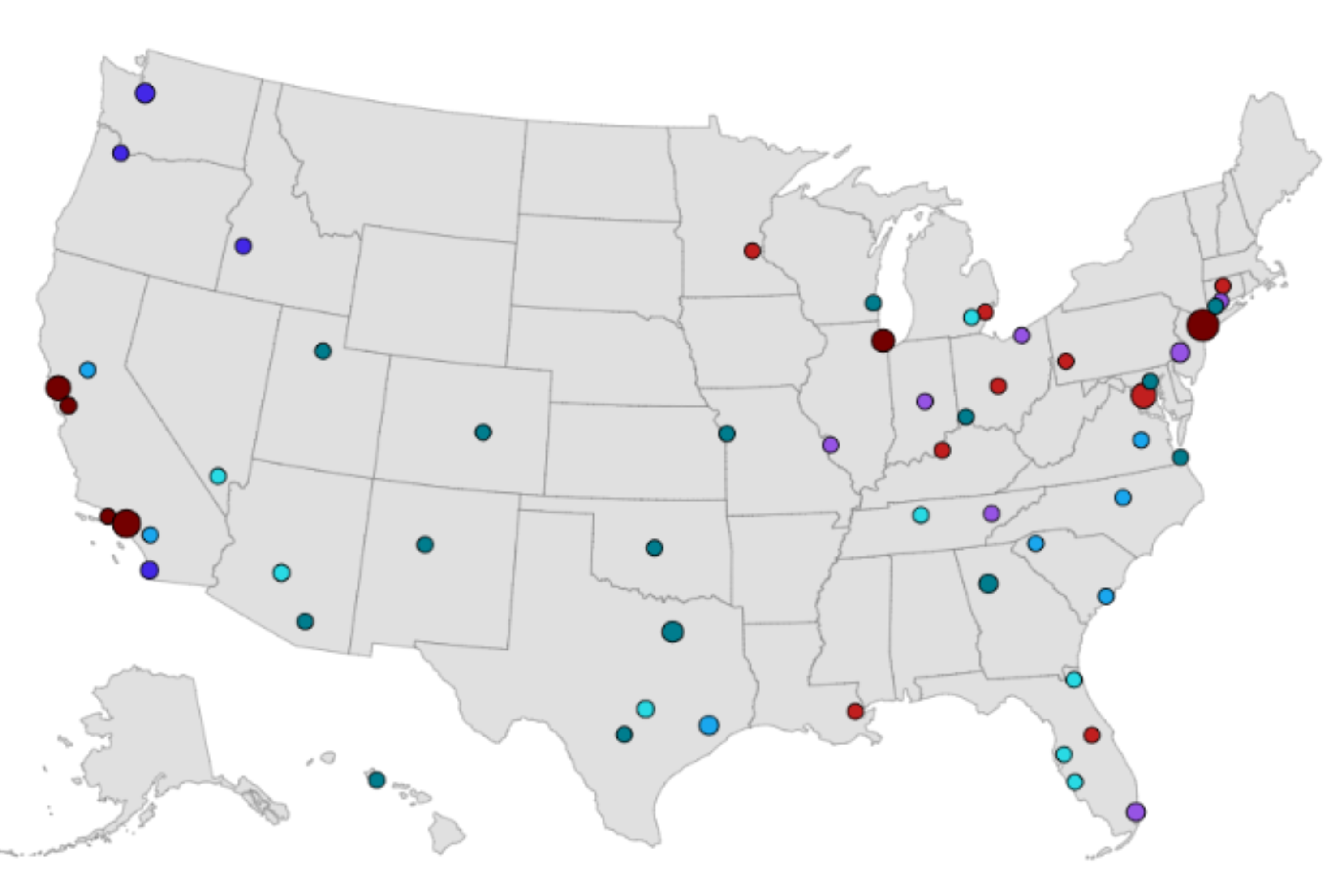Redistricting information from the 2020 Census released on Monday showed that Republicans have gained a significant advantage in three states, the Associated Press reported.
Western states, including Colorado, Montana and Oregon, gained residents in the decade since the last census, and each gained congressional seats. Florida, a perennial swing state, and North Carolina each gained one seat, while Texas was the biggest winner with two.
California is losing a congressional seat for the first time—a result of dwindling migration in the nation's most populous state.
New York and Ohio lost seats, as well as Illinois, Michigan, Pennsylvania and West Virginia.
The U.S. population rose by 7.4 percent to 331,449,281, the second-slowest increase ever, the census showed.
For more reporting from the Associated Press, see below.

The reshuffling of the congressional map moved seats from blue states to red ones, giving Republicans a clear, immediate advantage. The party will have complete control of drawing the congressional maps in Texas, Florida and North Carolina—states that are adding four seats.
In contrast, though Democrats control the process in Oregon, Democratic lawmakers there have agreed to give Republicans an equal say in redistricting in exchange for a commitment to stop blocking bills. In Democratic Colorado, a nonpartisan commission will draw the lines, meaning the party won't have total control in a single expanding state's redistricting.
It's been a bumpy road getting this far. The 2020 census faced a once-in-a-century coronavirus pandemic, wildfires, hurricanes, allegations of political interference with the Trump administration's failed effort to add a citizenship question, fluctuating deadlines and lawsuits. Division of federal money to the states is also at stake.
The GOP can shape districts to maximize the influence of Republican voters and have a major advantage in upcoming elections—possibly enough to win back control of the U.S. House.
But in the long term, it's not clear the migration is good news for Republicans. Many of the fastest growing states are increasingly competitive political battlegrounds where the new arrivals—including many young people and people of color—could at some point give Democrats an edge.
"What's happening is growth in Sun Belt states that are trending Democratic or will soon trend Democratic," said William Frey, a demographer at the Brookings Institution in Washington, D.C.
That means Republicans may be limited in how many favorable seats they can draw as Democrats move to their territory.
"It's going to be harder and harder for the Texas Legislature to gerrymander advantageous congressional districts" for Republicans, said William Fulton, director of the Kinder Institute for Urban Research at Rice University in Houston. "Texas hasn't flipped blue yet as a state, but the blue population centers are growing really fast."
Fulton, who moved to Texas from California, said his former home has become "the new California—the big state that's adding a lot of population." He believes California risks becoming the new Northeast—which he characterized as a stagnant, crowded area that retains wealth and intellectual clout but loses innovators to more promising places.
Despite California's slow growth, the state still has 10 million more residents than Texas.
North Carolina and Texas, Fulton said, are positioned to become the intellectual powerhouses of the new economy, as the South has snatched away major manufacturing industries like automobiles from the Rust Belt.
"We are 10-20 years away from the South and the West being truly dominant in American culture and American society," Fulton said.
But population booms also bring new burdens, like increased traffic, rising home prices and strains on an infrastructure already grappling with climate change—vividly illustrated when the Texas power grid failed in the winter storms of February.
The pattern outlined in the the Census data was one started in the 1930s with the invention of modern air-conditioning and has been steady since then, according to experts. The only change in the pattern was the halt in California's growth.
That has happened as home prices have soared in California, contributing to a steady stream of residents leaving for other Western states. Those relocations helped turn Colorado and Nevada into Democratic states and made Arizona competitive.
"That's the California exodus, blue state immigrants," Frey said. "Californians are taking their votes and moving to other places."
It's not just Californians who are moving. Brad Baskin and his wife, Janie, moved from the Chicago suburbs to Orlando, Florida, three years ago to be closer to their daughter, son-in-law and grandchildren. Janie Baskin is a registered Democrat, while Brad Baskin hasn't registered a party affiliation but was turned off by Trump.
The political views they have encountered in Florida have been a bit jarring, going from a state overwhelmingly dominated by Democrats to one where Republicans are in control at the state level, though Democrats control most municipal offices in the county that is home to Orlando.
Baskin, a photographer, said he recently made head shots for a client who told him, "It's OK for you guys to move down here, but leave your liberal views up there."
The power shift is also being driven by Hispanics. Over the decade, Hispanics accounted for around half of the growth in Arizona, Florida and Texas, according to figures from the American Community Survey, a Census Bureau program separate from the decennial census.
The state population figures known as the apportionment count determine not only political power but the distribution of $1.5 trillion in federal spending each year.
The legal deadline for turning in the apportionment numbers was December 31, but the Census Bureau pushed back that date to April because of challenges caused by the pandemic and the need for more time to correct not-unexpected irregularities.
More detailed figures will be released later this year showing populations by race, Hispanic origin, gender and housing at geographic levels as small as neighborhoods. This redistricting data will be used for redrawing precise congressional and legislative districts.
Correction (04/26/21, 6:33 p.m.): This story has been updated to reflect that Republicans gained seats in three states (North Carolina, Texas, and Florida) which are currently GOP controlled and to remove the designation of Texas and North Carolina as swing states. Additionally, the top graph has been rewritten to reflect that Republicans are getting an advantage toward putting GOP party members into Congress, rather than already having the seats.
Uncommon Knowledge
Newsweek is committed to challenging conventional wisdom and finding connections in the search for common ground.
Newsweek is committed to challenging conventional wisdom and finding connections in the search for common ground.
About the writer
To read how Newsweek uses AI as a newsroom tool, Click here.








